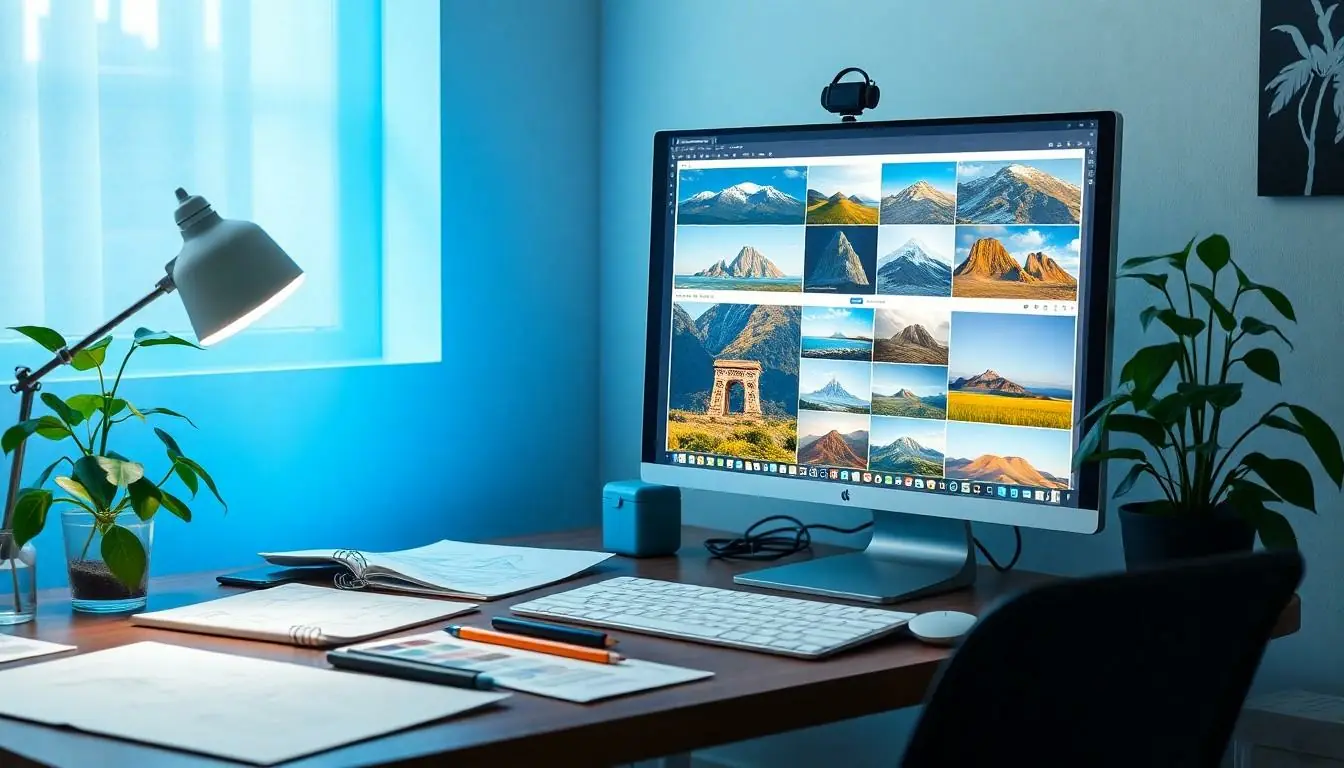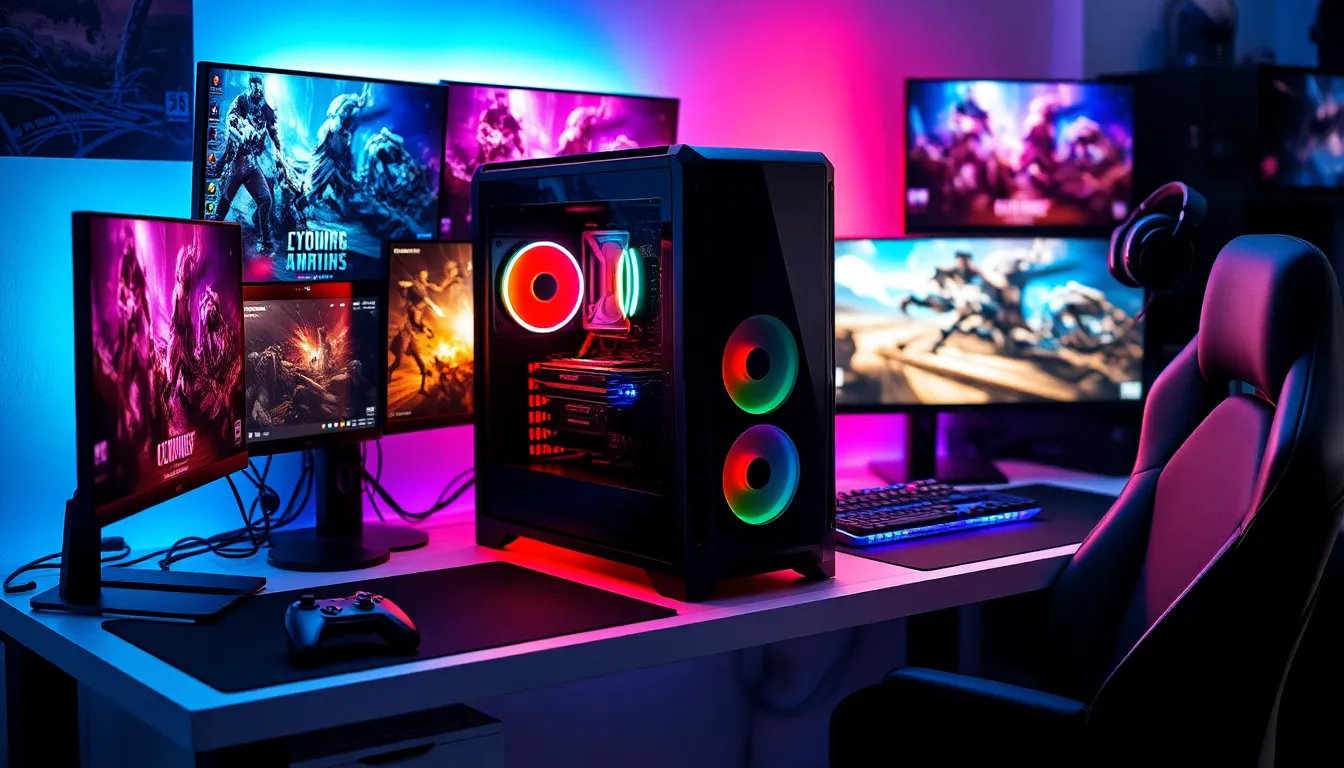In a world where creativity knows no bounds, hitting a pesky image limit can feel like a cruel joke. Imagine crafting the perfect visual story only to be thwarted by a digital wall. But fear not! There’s a way to outsmart these restrictions and unleash your imagination without restraint.
Table of Contents
ToggleUnderstanding ChatGPT Image Limit
ChatGPT’s image limit presents a challenge when trying to craft visual stories. Recognizing the constraints allows creators to find solutions to enhance their creative expression.
Explanation of the Image Limit
The image limit in ChatGPT relates specifically to the maximum number of images the model can generate in a session. Limits often exist to maintain server efficiency and ensure smooth performance. Users might find themselves restricted to a certain number, impacting their ability to create extensive visuals. Many designers and artists run into this limitation when aiming for more comprehensive storytelling through images.
Reasons for the Limit
Several factors contribute to the implementation of image limits. First, excessive use can overload server resources, resulting in slower response times. Another issue involves quality control; restrictions help maintain a balance between speed and output quality. Additionally, significant server workload arises from processing numerous images simultaneously. Overall, these limitations help ensure a stable experience for all users while optimizing resource allocation.
Methods to Bypass ChatGPT Image Limit

Exploring various methods can help creators effectively navigate the image limit in ChatGPT. The following options offer practical solutions for increased creative flexibility.
Alternative Tools and Software
Many designers find value in alternative tools that complement ChatGPT. Platforms like DALL-E and Midjourney allow for image generation beyond set limits. Such tools provide different styles, enabling unique visuals. Additionally, Canva offers design capabilities with graphic resources. By integrating these platforms, users can enhance their projects further. Exploring subscription-based or free versions adds access to a wider range of features.
Utilizing API Features
Leveraging API features can significantly help users exceed image limitations. Developers often use ChatGPT’s API for customized applications tailored to specific needs. The API allows for concurrent image requests, enabling multiple images to be generated in various contexts. Documentation on the API provides essential guidance to maximize its potential. Users can create scripts to automate requests, enhancing productivity. By employing these strategies, creators can streamline their workflows while maintaining quality output.
Risks of Bypassing the Limit
Bypassing ChatGPT’s image limit poses various risks, affecting creators and platforms alike.
Ethical Considerations
Ethical dilemmas arise when creators attempt to circumvent limitations. Sensitive content may emerge from unrestricted image generation, leading to potential misuse. Transparency becomes crucial, as users might rely on misleading information if they manipulate algorithms. Intellectual property issues also surface, particularly when using others’ artworks without permission. Respecting the rights of original creators remains essential to maintaining integrity in the creative process. Shedding light on these ethical considerations helps encourage responsible content creation.
Potential Consequences
Consequences can range from technical setbacks to severe repercussions when bypassing limits. Server performance may decline due to increased strain, impacting all users and their experiences. Legal actions can ensue for violating terms of service or copyright infringement, jeopardizing creators’ access to tools they rely on. Additionally, reputation damage can occur if audiences perceive creative practices as dishonest or deceptive. Maintaining adherence to established guidelines fosters a healthier creative environment for everyone involved. Understanding these potential consequences is vital for creators dedicated to ethical practices.
Best Practices for Image Usage
Effective image usage enhances storytelling while bypassing image limits. Understanding optimal standards and improving image quality maximizes visual impact.
Optimal Image Sizes and Formats
Utilizing appropriate image sizes and formats can lead to better load times and enhanced quality. JPEG images work best for photos due to their balance between quality and file size. PNG format, on the other hand, is suitable for graphics and images with transparent backgrounds. For web applications, images should typically measure 1200 pixels wide. Adhering to an aspect ratio of 16:9 ensures compatibility across platforms. Smaller file sizes, ideally under 500 KB, facilitate quicker uploads and processing, which is crucial when navigating limits in ChatGPT.
Tips for Improving Image Quality
Improving image quality significantly impacts overall visual appeal. Always start with high-resolution images, typically 300 DPI, to avoid pixelation. Utilizing editing software can help enhance brightness and contrast, making images more appealing. Consistency in style across images contributes to a cohesive visual narrative. Compression tools efficiently reduce file sizes without sacrificing clarity. Regularly testing images across different devices ensures compatibility and optimal display quality. By following these tips, creators can maintain high standards while effectively managing image limitations.
Bypassing ChatGPT’s image limit requires a blend of creativity and strategic thinking. Utilizing alternative tools and APIs can significantly enhance a creator’s flexibility while maintaining quality. However, it’s crucial to navigate these options ethically and responsibly to avoid potential pitfalls.
Adhering to best practices in image usage not only optimizes storytelling but also ensures a smoother creative process. By embracing these strategies, creators can unlock new possibilities and elevate their projects without compromising integrity or quality. Ultimately, fostering a respectful and innovative environment will benefit both creators and their audiences alike.



